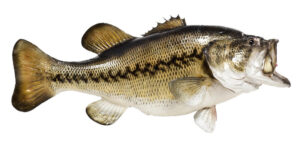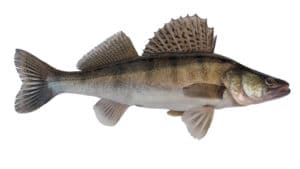Fishing Terms You Need to Know
In the world of fishing, there are many important terms you should know. Have you ever heard someone tell fishing stories and mention a term you don’t have an idea what they were talking about? Well, you don’t have to be afraid? Now you can learn the latest fishing terms! The following is the list of fishing terms you need to know:
Snap or snap swivel: A snap is a piece of hook-shaped wire with a clasp attached to a fishing line. The fishing lure is attached to the snap. The snap swivel is the same concept but also helps prevent line twisting.
Strike: This is a pull on the fishing line indicating that a fish is trying to take the bait or lure. It is also called “hit”.
Angler/angling: Fishing with line and hook. Angling is another word for fishing and Angler is the person who fishes.
Backlash: This is a tangled fishing line on a baitcasting reel.
Bait: Food, or some alternative, used to attract fish. Live bait includes worms, pests, insects, cancer, etc.
Baitcasting: This is a process of fishing with revolving reel and baitcasting rod. The reel is installed on the top side of the rod.
Catch and Release: This is a fishing technique that has to do with releasing a fish after catching it, instead of keeping it. A fisherman unhooks the fish quickly and throws it back into the water. This practice of catch and released is used as a conservation technique.
Crankbait: a lure that looks like a minnow with a lip that makes the lure to dive underwater when retrieving; usually made from balsa wood or plastic.
Drifting: This is a fishing technique in which the fisherman allows the boat to drift in the wind, it usually involves the use of live bait.
Livewell: This is a partition in a boat that holds water, which is used to keep caught fish alive. This prevents the transfer of harmful invasive species from one lake or river to another, drain the water from the livewell while on the ground before leaving any body of water.
Sinker: This is the weight used to keep the fishing lure from floating on the water. They come in different shapes, weights, and types.
Trolling: This is a technique of fishing from a moving boat, the bait is cast at the back of the boat and engine is in forwarding gear at a slow pace. Back-trolling is alternative method in which the boat’s engine is place in the reverse. This allows the boat operator to make sharp turns to follow the changes in the bottom structure of the lake and help keep fishing lines away from the tangling. Live bait or crankbait are the favorites for this type of fishing.
Cutthroat Trout: This is a kind of trout found mainly in the western part of the United States.
Dapping: This is a fly fishing technique in which the fly frequently bounced on and off the surface of the water.
Down Eye Hook: A hooks that the eye bends below the shaft.
Dropper: The less important fly that is attached to the leader in a cast of flies.
Emerger: This is a term used to explain any insect that moves up the surface of the water and prepares to incubate into the adult stage.
Feeding lie: This is where a trout go to actively feed.
Flat Butt Leader: This is a fly used in fishing where the butt part is formed into a ribbon shape.
Freestone Stream: This is a fast-moving, tumbling stream with rock covered bottoms.
French Snap: This is a small clamp, frequently used by a fly fisherman to attach the net to his vest.
Holding lie: This is where trout generally remains when it is not actively feeding.
Barries: Barracuda
Albies: Albacore
Bones: Bonito
Boil: Topwater disturbance caused by big fish pursuing little fish.
Breezers: fish that are just swimming through a spot. Not necessarily feeding, just teasing.
Spooked: soaked fish
Spooled: all the line has been stripped from the reel. Panic time.
String: fishing line
Tails: Yellowtail.
Tangler: A miserable fisherman trying to fish in a boat full of people.
Toad: huge fish
Wider-Open: to drop bait into the water, catch a fish.
Worms: live bait, sardines, chovies, etc.
Yellows: This refers to either Yellowfin Tuna or yellowtail. But not Yellowfin Croaker
Action: a generic term that is often used to describe the feel of the rod, like hard, slow or fast.
Blank: a rod without handle, guides or reel seat
Blood knot: the common name of a barrel knot
Chalk Stream: a stream generally found in the valleys, which spring feed and slow is moving with much vegetation.
Complex Hatch: the simultaneous hatching for various types of insects
Midge Rod: a short, lightweight fishing rod
Nymphing: any of different fishing techniques in which the fly fisherman presents an imitation of the underwater stage of an insect.
Presentation: the mode f placing a bait or lure where the fish is most likely to see it.
Rise: the act of a fish taking an insect from the water’s surface.
Run: a term used to describe a certain stretch of moving water.
Shooting: This is a casting technique.
Spate: High water
Stripping: A fast retrieving line or pulling line from the reel
Buzz bait: A big bait with a propeller kind of blades that roil when they retrieved on top of water
Terrestrial: has to do with an insect that spends its entire life cycle on land or in plants
Wader’s staff: This is a strong rod around the height of the armpit a person fly fishing used to stand in heavy water.
Chummer: Seasick Person.
Denise: small sardines.
Dinks: Little Fish.
Dinos: big sardine.
Dogs: Seals
Foam: Much large fish is heavily feeding on a lot of small fish. The disturbance of the Topwater is so great that it create foam on the top water.
Firecrackers: Small Yellowtail
Flat: Huntington flat. Sandy-bottom area situated 1-3 miles off Huntington Beach

